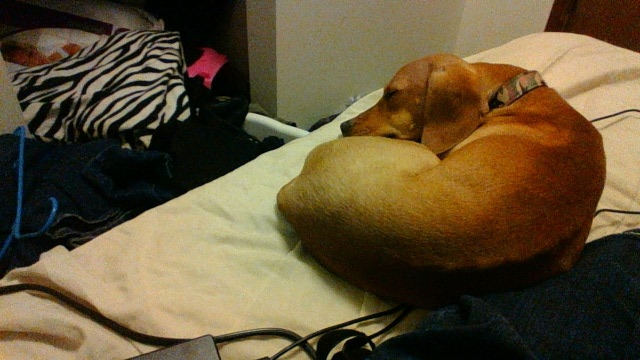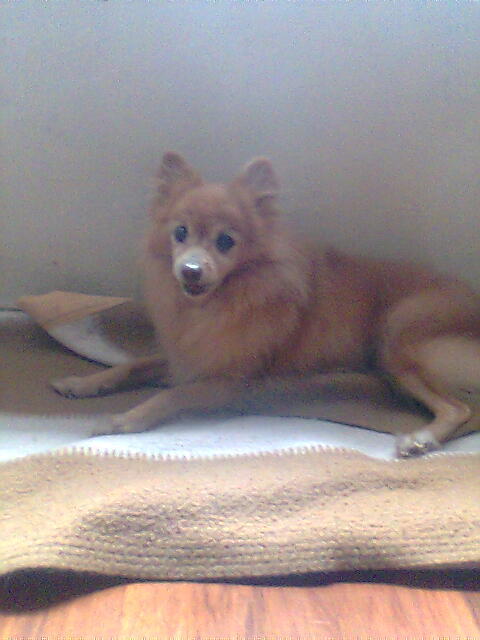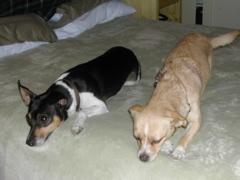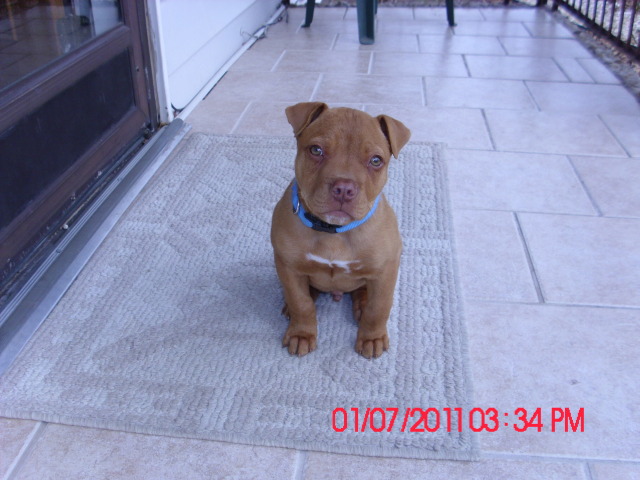Questionhi, my female was spayed sept 29th. her start of first heat was july 2nd...she will be i year old oct 18...she is housebroken to wee wee pad. and will also go outside on her walks...suddenly after being spayed she is now urinating on the bed. the first time was when i was going to give her a steak bone and decided not to because it felt to thin, worried she might choke on splintering pieces. well she knew this bone was coming and when i threw out, a short while later she went on bed and peed in front of me. i put her away in kitchen then awhile later let her out and she jumped back on bed and did it again... thinking it was spite over the bone...now a week later, no excitement or anything out of the norm, she got up on bed and peed again...she never did this prior to being spayed...what is up...i am heartbroken...she is usually really good...
AnswerHi Maureen,
Thank you for writing to me about your female who was recently spayed and is currently showing signs of incontinence. This is not an uncommon occurrance.
The first thing to do is to have your dog examined by a vet. Ask him taking some blood work. You want to make sure that she doesn't have a bladder or kidney infection. You also want to have her hormones checked for any imbalances.
The reason for incontinence in the spayed female dog, is due to a lack of estrogen. In the female dog, estrogen is responsible for providing tone to the bladder sphincter muscle. When spayed, this hormone is no longer being produced in the amount it was prior to the removal of the ovaries (where the estrogen is produced). Small amounts of estrogen hormone are produced by the adrenal glands (small glands that are located right next to the kidneys). Most of the time, this is enough estrogen to provide bladder sphincter tone. However, in some cases it is not. These dogs then require medications to support bladder sphincter tone. In the female dog, if bladder sphincter tone is not maintained, medication is required. The medication available to assist in urinary incontinent dogs, includes hormonal replacement of estrogen or the use of direct bladder sphincter stimulants. If estrogens are utilized for female dog incontinence, they are typically given once daily over a 5-7 day period, then tapered down to three times a week. Lately, this drug has been discontinued for the veterinary market in its original form known as Diethylstilbestrol or DES for short. Some formulating pharmacies however, can still make DES available for the veterinarian. Another drug, which provides direct stimulation of the bladder sphincter muscle, is known as Phenylpropanolamine or PPA for short. This drug has recently undergone a class reschedule change to a controlled substance, which has made the cost of medication increase. It is still quite affordable however, and recommended when DES is not available, or in cases where DES is not effective. Another medication for after spay urinary incontinance is Cystolamine, which is the timed release version of PPA and is supposed to be safer than PPA. I would suggest that you discuss using Cystolamine for your dog with your vet.
It is important to let your vet know if your dog is drinking more than normally and urinating larger volumes than normal. There are also diseases and disorders that increase the urge or need to urinate without an increase in actual urine volume. These include cystitis, bladder stones or
stones elsewhere in the urinary tract, and cancer in the urinary tract
I was recently reading about a spayed female dog who started leaving puddles when she was sleeping. The owners started her on a tail-wagging program to increase the strength of her pelvic floor muscles (like Kegels for dogs). They taught her to wag her tail on command by shaping the tail wag using a clicker and treats, and eventually got her to the point where she could wag vigorously when asked to. She stopped leaking about a week after the regular wagging exercises began. Now she does 3 sets of 30 wags every day, and she has never leaked again. This is a possible option for you to try for a non-drug option for spay-incontinence.
A homeopathic remedy that has some success is Pulsitilia. It has been used for female incontinence instead of medication. Homeopathy tends not to have side effects and is worth trying.
My own dog had spay incontinance. I discovered that by eliminating ALL forms of grains, she's perfectly normal now. As soon as I add even a small amount of grains back into her diet, including grain based treats, she becomes incontinant again. I make sure that she doesn't have any grains in her diet and as long as I stick to the program, she never leaks.
I would also recommend acupuncture as a possibility. Working with a holistic vet, even long distance, can keep your dog out of harm's way regarding side effects of medications.
Best Regards,
Shelley Davis

 2 Year Old Dachshund Rescued From Probable Bad Situation
Question
Nelson Nelson
Hi there! I recentl
2 Year Old Dachshund Rescued From Probable Bad Situation
Question
Nelson Nelson
Hi there! I recentl
 Mastitis
QuestionQUESTION: Good morning Karen.
My Pomeranian is
Mastitis
QuestionQUESTION: Good morning Karen.
My Pomeranian is
 Vicious fighting between two females
Question
Alice and Julia
I have two female rescue dogs
Vicious fighting between two females
Question
Alice and Julia
I have two female rescue dogs
 puppy medical concerns
Question
Rusty
my 11 week old red nose pit bull at time
puppy medical concerns
Question
Rusty
my 11 week old red nose pit bull at time
 7 week old lurcher pup
Question
this is Lady
hi there me and my partner purch
7 week old lurcher pup
Question
this is Lady
hi there me and my partner purch